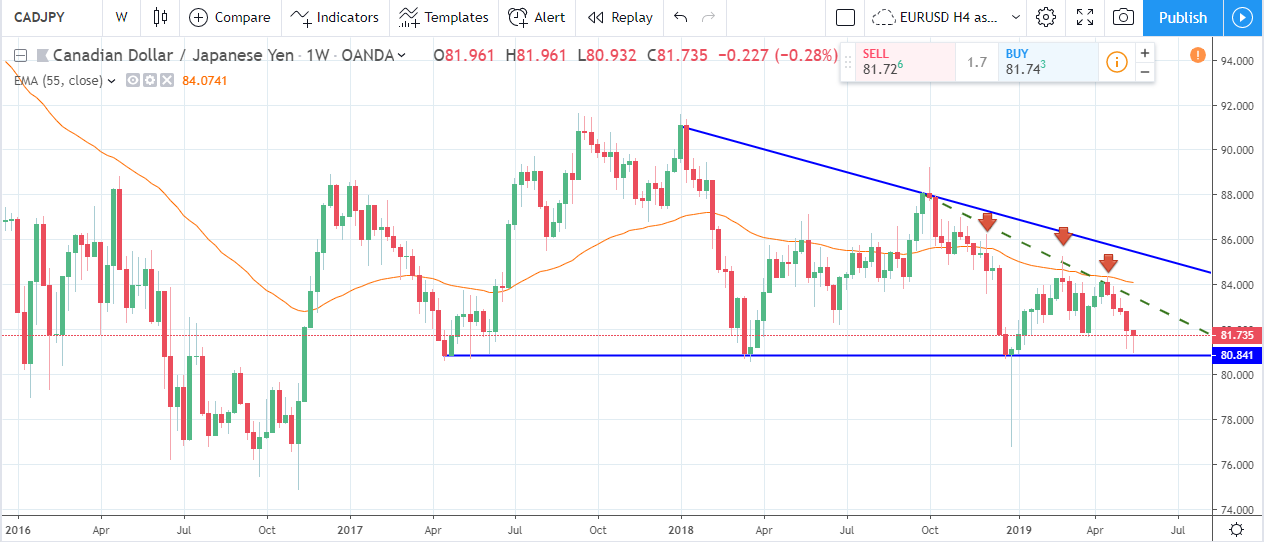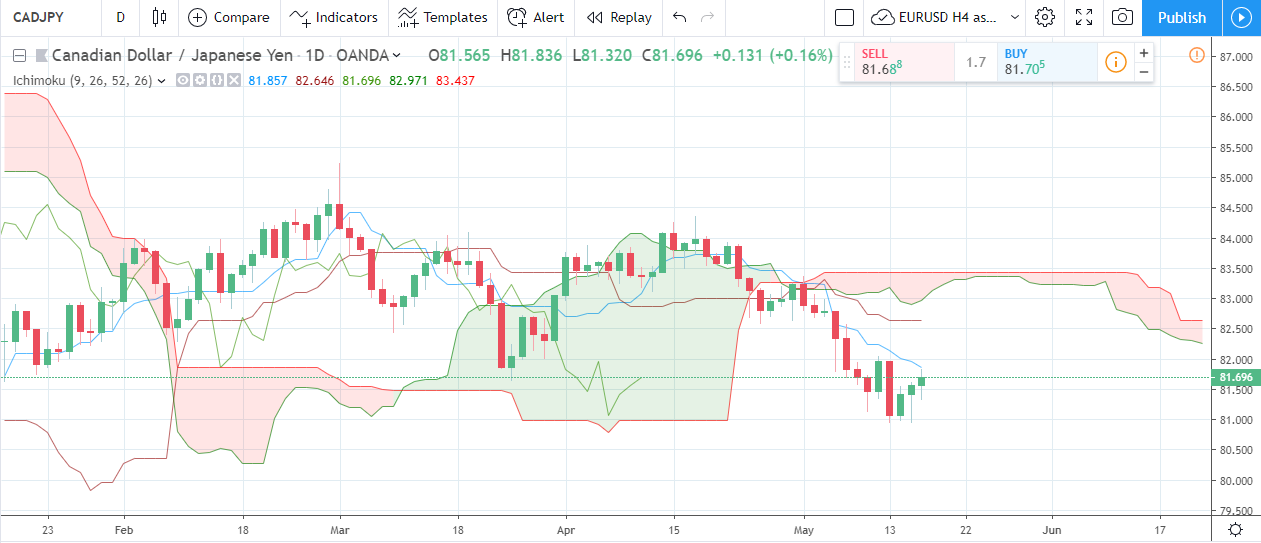Has CAD/JPY bottomed out?
Global financial markets were focusing on the world’s reserve currency - the U.S. dollar - several weeks in a row as many surprises came in from macroeconomic and geopolitical sides. First, the U.S. economy showed a much faster pace of growth with the Gross Domestic Product beating the analysts’ expectations and the labour market continuing to surprise economists. Although many pundits were predicting a decent slowdown for the leading world’s economy, macroeconomic reports were robust, and the overall markets’ sentiment was positive. As a result, the U.S. dollar index strengthened to 2-year high levels versus its major peers, as the greenback’s attractiveness grew in the light of fundamental disbalances. A deep retracement followed the rapid uptrend after shocking news in the space of U.S.-China trade wars. After a short-term turmoil, investors calmed, and high-yield assets came back to growth in line with this year’s uptrend.
The Canadian dollar has been underestimated recently. The main divergence in the USD/JPY currency pair’s action was that several reliable economic reports weren’t played out by the speculators. First, Ivey Purchase Managers Index picked up the growth momentum in April, showing that local manufacturing and industrial production is in good shape. Second, the labour market surprised analysts as the number of new jobs created in April beat the market consensus with much stronger-than-expected report, ten times higher than in the previous month. Such a massive jump in the employment should reflect the spike in consumption and spending, influencing the inflationary pressure. The Bank of Canada will be forced to react by hiking the interest rates, which are still at comparatively low levels. Third, Canadian GDP showed that the economic expansion kept spreading the country’s influence not only in the North American region and but also across the globe. However, USD/CAD did not reflect those changes yet, hovering in a tight rage of 1.3400/3500. On the other side, the bulls failed to lift the pair above the significant technical resistance level of 1.3550, which might create a bearish slide in the nearest future.
On the other side, the Japanese yen was gaining strength on the back of capital flows in safe-haven assets as global equities tumbled, bouncing off the long-term peak. Japan struggled to face global economic challenges; exports volume fell, industrial and manufacturing production dropped. But one of the worst nightmares for any central bank in the world - deflation - became a significant concern for the Bank of Japan. The issue is that Japanese culture does not suggest such a high level of spending and consumption as in Western civilization. Japanese consumers monitor the macroeconomic situation and do not allow themselves to come out of a modest way of life. As a result, the Consumer Price Index neared negative figures, forcing the central bank to start developing a supportive measure for the economy. Latest comments from BoJ officials are not only usual verbal interventions to support Japanese exporters. The regulator is seriously getting ready to step in, lowering the interest rates in the third largest world’s economy. Additional liquidity can be infected in the financial system, softening conditions and attracting more fixed-income market players to borrow Japanese yen and forward it into high-yield assets. Such capital flows would significantly weaken the currency, lifting such pairs as USD/JPY, EUR/JPY, GBP/JPY and CAD/JPY.
Technically speaking, CAD/JPY is in a downtrend since the peak printed in January 2018. The weekly chart below shows several lower highs charted since then, and the latest bearish action points to a possible acceleration as the green dotted resistance line has a sharper descending angle. This weeks’ price action was directed to a fourth test of the horizontal static support line, which used to hold quotes since the bullish rally in April 2017. Therefore, as long as CAD/JPY holds above that defensive barrier, we can conclude that the uptrend is still in play. On the other side, the 55-week exponential moving average works as the resistance curve as the pair bounced off after three failed tests. However, the long shadow of the current candlestick confirmes that the bulls are ready to fight for the support level at 80.841, and they would not give up that easy. Therefore, another run towards the resistance range of the triangle is likely. A target of 84.00/84.75 is quite an achievable for the bulls even though that would be just a retracement from the long-term point of view.

The daily technical sentiment is negative, though. The chart below shows that the Ichimoku Cloud trend indicator is bearish as its span turned red after the failed bullish test in April 2019. The buyers were unable to complete the reversal pattern, and CAD/JPY slid almost 200 pips since then. Both Ichimoku lines are placed to continued the downtrend. However, the current action points to a test of the nearest resistance curve - Conversion Line. If breached, a potential reversal pattern might occur, and the buyers would eye the Base Line resistance at 83.623, which did not change its angle since May 13, suggesting a more comprehensive range of the consolidation zone. The basic level to inverse the formation is 81.857, and the daily close quote has to be monitored before entering the market. If CAD/JPY closed the day above that level, a deeper bullish retracement might be on the table.

Read also